In sports and fitness, muscle recovery can be just as important as the workout itself. When intense training regimens are used, your muscles may not have enough time to recover by themselves. Therefore, various muscle recovery solutions can be used to aid this process and enhance the person’s physical performance. This article will look into the different types of muscle recovery devices, as well as how and when they should be incorporated into your fitness routine.
Contents
Understanding muscle recovery
Muscle recovery isn’t merely a phase of rest; it’s a complex process where the body repairs and strengthens itself after exercise. This period is vital for enhancing performance, reducing fatigue, and preventing injuries. During intense physical activities, muscles essentially undergo microscopic damage, triggering inflammation and soreness. The recovery process involves the repair of these muscle fibres, which not only helps in alleviating pain but also contributes to muscle growth.
Effective muscle recovery, therefore, is essential for anyone engaged in regular exercise, from professional athletes to fitness enthusiasts. It’s about balancing the stress of workouts with adequate rest and recovery techniques to ensure continual improvement and well-being. Adopting proper muscle recovery methods, including the use of specialised devices, can significantly improve the quality of one’s training and overall physical health.
Types of muscle recovery methods
There are quite a few different types of muscle recovery devices you can choose from. Some of these methods can be achieved using simple at-home solutions, but advanced devices with smart technology are also available from specialised brands, including the industry leaders Hyperice. Let’s have a look at the different methods and their benefits.
1. Massage gun
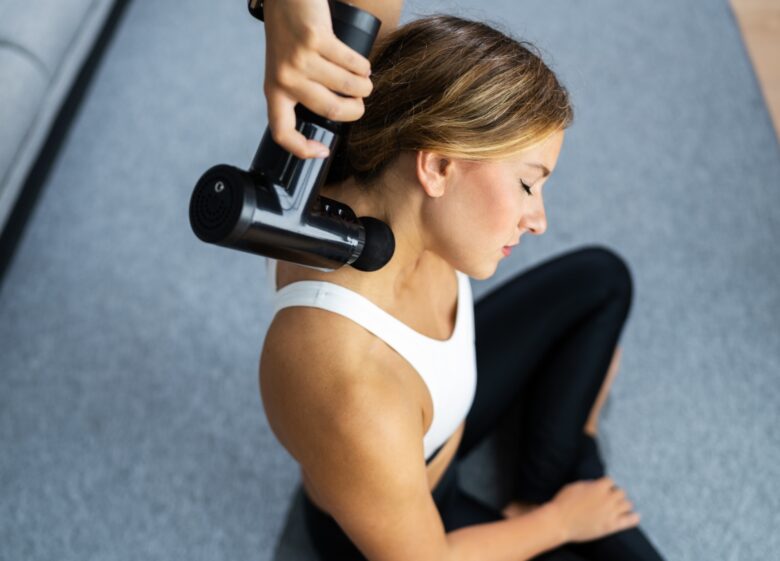
Source: canva.com
Massage guns, also known as percussive therapy devices, are handheld tools that provide deep tissue massage. They work by delivering rapid bursts of pressure into the muscle tissue, helping to increase blood flow, reduce muscle tightness, and alleviate soreness.
Massage guns are best used after a workout to aid in recovery. They can also be utilised on rest days to maintain muscle flexibility and reduce stiffness. For optimal results, use massage guns for short durations (around 2–3 minutes) on each muscle group. It’s best to avoid bony areas or using them on injured areas without consulting a healthcare professional.
2. Compression therapy

Source: westcoastwound.com
Compression therapy involves wearing specially designed garments or devices that apply consistent pressure to specific body parts. This pressure enhances blood circulation, reduces swelling, and speeds up muscle recovery.
Compression devices are ideal for use after intense workouts, particularly for endurance athletes. Compression garments can be worn both during exercise to improve performance and post-exercise to assist in recovery.
3. Foam rollers

Source: canva.com
Foam rollers are cylindrical tubes used for self-myofascial release. Rolling over various parts of the body helps in breaking down tight muscle knots and improving blood flow.
Foam rollers are also effective both pre- and post-workout. Before exercise, they can be used to warm up muscles and increase flexibility, for around 5–10 minutes. Post-exercise, they aid in muscle recovery and reducing soreness.
4. Cold therapy
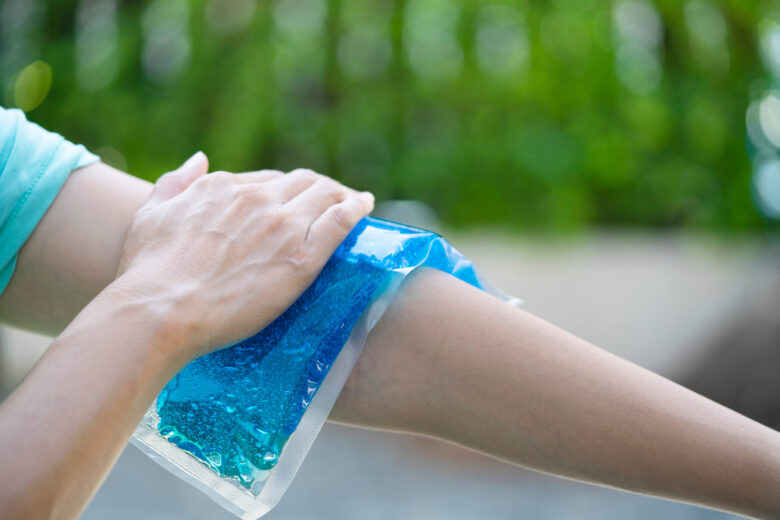
Source: alexorthopedic.com
Cold therapy, or cryotherapy, involves the application of cold temperatures to reduce inflammation and muscle pain. This can be achieved through ice packs, cold water immersion, cryotherapy chambers, or other cold therapy devices.
Cold therapy is most beneficial after exercise to reduce inflammation and muscle soreness. It’s also useful in treating minor injuries like sprains or muscle strains. It is most effective when used immediately after intense exercise or injury, and it should be limited to short bursts (10–15 minutes) to avoid skin damage.
5. Heat therapy
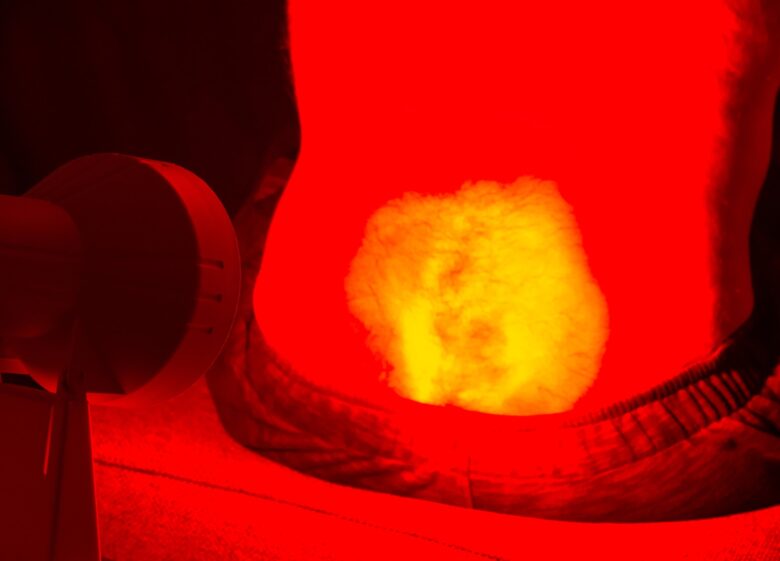
Source: canva.com
Oppositely to cold therapy, heat therapy involves applying heat to the body to increase blood flow and relax tight muscles. This can be done using heating pad devices, hot water bottles, or warm baths.
Heat therapy is ideal for muscle relaxation and is often used before exercise to prepare muscles. It can also be used on rest days to alleviate muscle stiffness. If you are not using a professional device with temperature control, be careful to not burn yourself – the heat should feel comfortably warm, not hot. Apply heat for about 15–20 minutes at a time to avoid skin irritation.
6. Pressotherapy
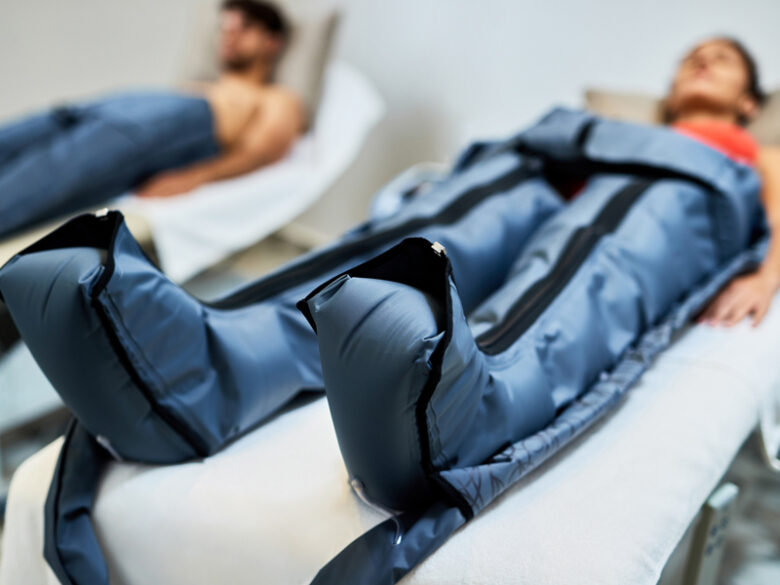
Source: jnmassage.co.uk
Pressotherapy uses controlled pressure to enhance lymphatic drainage and blood circulation. This therapy often involves wearing a suit that covers limbs and torso, inflating to exert pressure.
Pressotherapy is typically used post-workout to speed up recovery and reduce muscle fatigue. It’s particularly beneficial for athletes who engage in high-intensity training. Sessions typically last between 15 and 30 minutes, depending on individual needs and tolerance levels.
7. Electrical Muscle Stimulation (EMS)
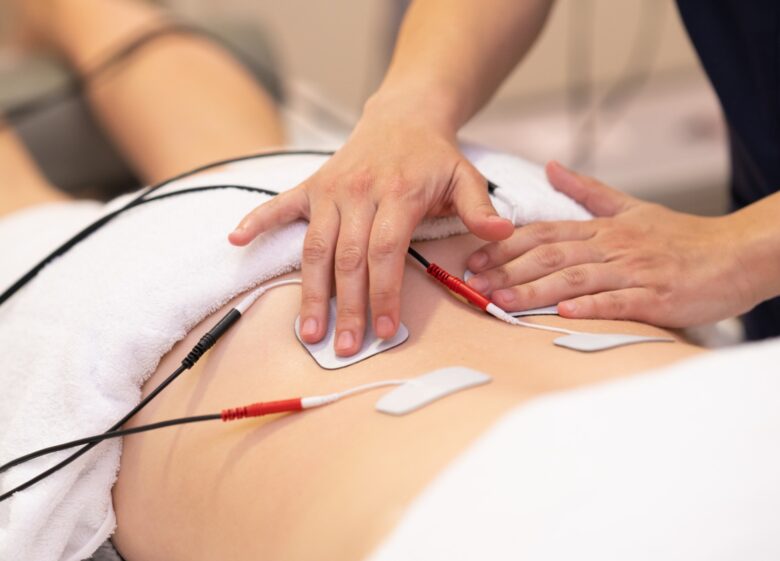
Source: canva.com
EMS devices use electrical currents to stimulate muscle contraction. This helps in strengthening muscles, improving blood circulation, and aiding in recovery.
EMS can be used both for training and recovery. In training, it helps in muscle strengthening and conditioning. For recovery, it’s used post-exercise to alleviate soreness and improve circulation. Begin with a lower intensity and gradually increase as your comfort level allows. The sensation should be strong but comfortable, and areas around your heart and front of the neck should be avoided.
Conclusion
Incorporating muscle recovery devices into your fitness routine can significantly enhance your recovery process, leading to better performance and reduced risk of injury. Remember, it’s crucial to understand when and how to use these devices to maximise their benefits. Always consult with healthcare professionals if you’re unsure about the best recovery method for your needs.
